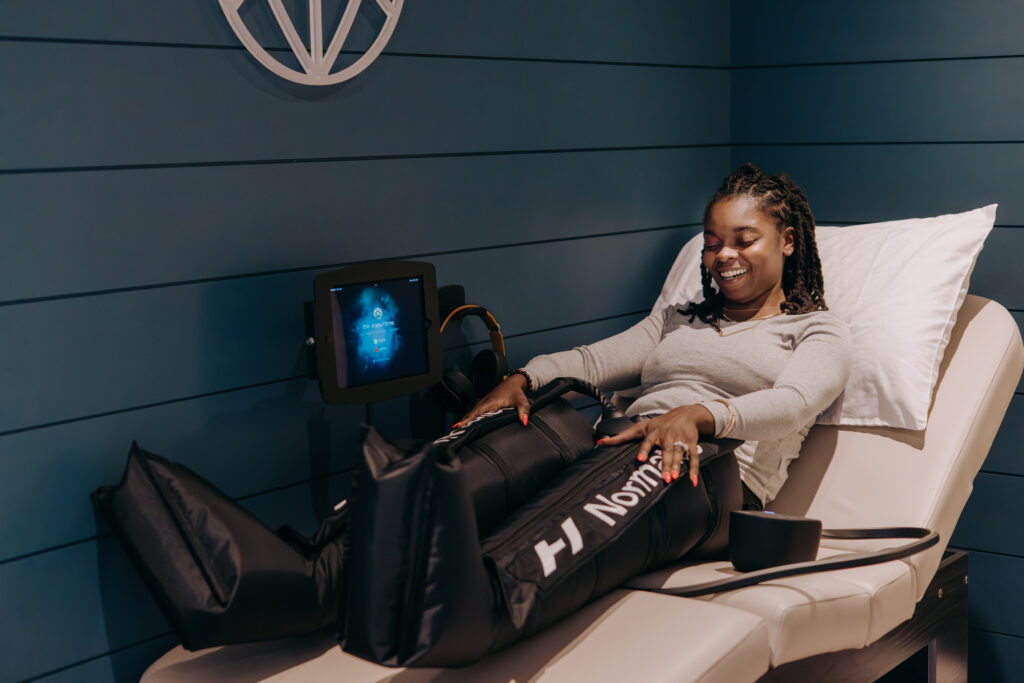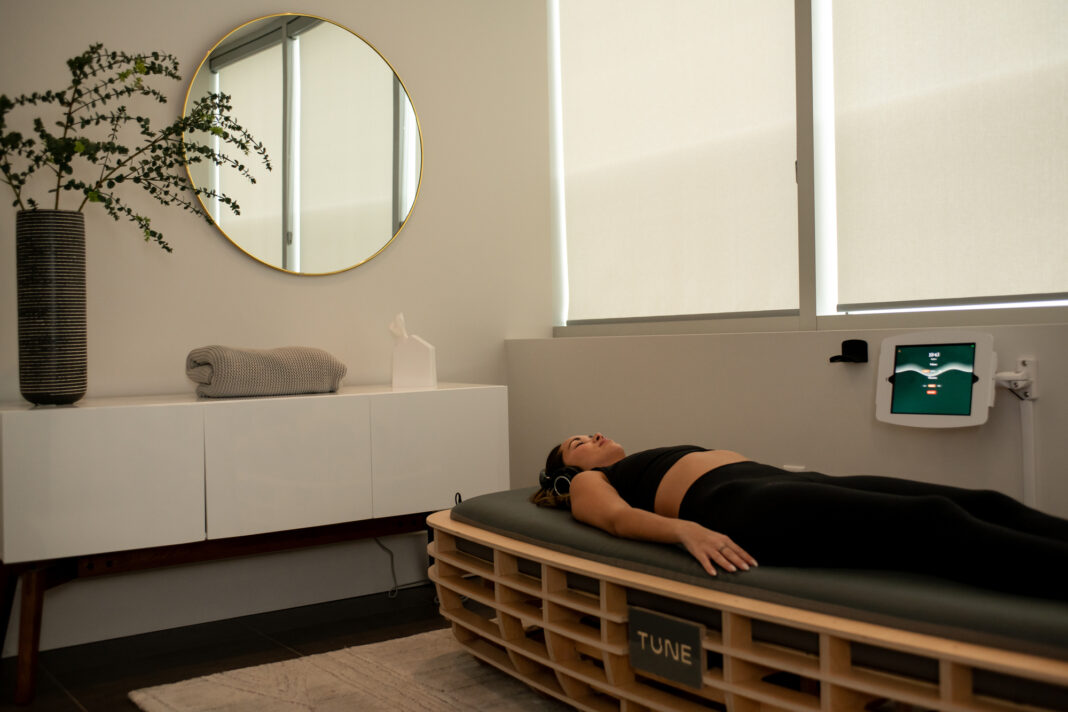Technology has affected every aspect of our lives, so it’s no surprise that it has made its way into self-care and wellness. An increasingly popular trend, high-tech self-care is revolutionizing how we approach health and well-being, offering innovative solutions that flip the script on traditional practices. Plus, it could be argued that self-care was long overdue for a reimagining anyway—who’s got the time for long days spent at the spa?
Rather than relying on traditional hands-on therapies for enhanced performance and recovery, many athletes are now opting for the quicker, more efficient results of high-tech services that promote similar outcomes. But this type of wellness isn’t just for athletes—busy professionals or those juggling multiple roles and responsibilities are turning to high-tech wellness treatments for quick and effective stress relief.
But what exactly is high-tech self-care, and is this trend one that’s here to stay?
What Is High-Tech Self-Care?
High-tech self-care involves using advanced technologies to support and improve personal health and wellness. This includes a range of devices and modalities designed to optimize physical, mental, emotional, and even spiritual well-being. From infrared saunas to vibroacoustic instruments and neuroacoustic software, high-tech self-care merges science with mindfulness to create powerful and transformative experiences.
The benefits of high-tech wellness services are multifaceted, catering to both physical and mental health. Physically, these sessions can help reduce inflammation, improve circulation, enhance overall health, and accelerate recovery from exercise or injury. They offer a convenient and effective way to support overall physical health without drugs, invasive procedures, or lengthy recovery times—many times, at a fraction of the cost and time associated with traditional procedures.
Mentally, this brand of wellness can significantly reduce stress, improve sleep quality, boost mood, and enhance mental clarity. Modalities like neuroacoustic and vibroacoustic therapy are particularly effective in promoting relaxation and mental rejuvenation, providing relief from the pressures of daily life.
Lights, Sounds, Vibrations
Several factors are driving the popularity of high-tech self-care. The fast-paced nature of modern life leaves many people seeking efficient and effective ways to manage stress, enhance energy, and maintain overall health. High-tech wellness offers rapid results that fit into busy lives, making them highly appealing. With sessions lasting anywhere from 10-60 minutes, treatments are designed to leave you feeling good fast—excellent news if the only time you’ve got to dedicate to yourself is your lunch hour.
With ongoing research being conducted, high-tech wellness services come in a range of options that address various aspects of health and well-being. Some popular methods, such as infrared saunas that use full-spectrum light to promote detoxification, reduce inflammation, and relax muscles, have made their way into the mainstream already (some people have even installed infrared devices into their homes!), while others are still gaining popularity.
Red light therapy is a growing trend that uses specific wavelengths of light to stimulate cellular energy production that improves both skin health and your mood. Using sounds, neuroacoustic therapy software effectively guides the brain into deep relaxation, helping to manage stress, enhance performance, and support mental clarity. These sessions also provide the benefits of several hours of sleep in a short session.

Vibroacoustic therapy employs sound vibrations that gently tune the body into an optimal state, recalibrating the nervous system and promoting overall well-being. And for any athlete who’s reliant on traditional therapies for maintenance and recovery, compression therapy offers these benefits in a fraction of the time. Using dynamic air compression, this type of therapy improves circulation, breaks up lactic acid, speeds up recovery, and enhances lymphatic drainage, drastically reducing muscle soreness and fatigue.
Another new therapy, EES, is used to promote energy enhancement, and can provide stress relief and improve sleep through scalar wave technology. Additionally, salt therapy, which involves a salt generator that produces micro-particles of salt, promotes expansion of lung capacity and improves respiratory health.
The Future of Wellness
Looking ahead, the future of self-care is undoubtedly trending toward a more high-tech, holistic approach. We can expect continued innovation in this field, with new technologies emerging to offer even more effective and accessible experiences. As awareness of high-tech wellness grows, this style of self-care will become more integrated into our everyday lives, making it a fundamental aspect of surviving and thriving in the world.
Photography by Vicki Bartel
You may also like: Strength Training: Pump Iron to Boost Mood

Read This Story in Our 2024 Summer Outdoor & Travel Issue
Featuring Canadian Taekwondo Olympian, Skylar Park. Must-visit adventure destinations across Canada. Your best trail running season ever with FAQs and threshold training plans. How (and why) gravel biking can rule your summer. Essential preparation to stay injury-free during hikes. Zero-waste your hiking and camping trips like a pro. Treat yourself with a Rustic Strawberry Chocolate Tart or Dairy-Free Vanilla Ice Cream, and so much more.

















